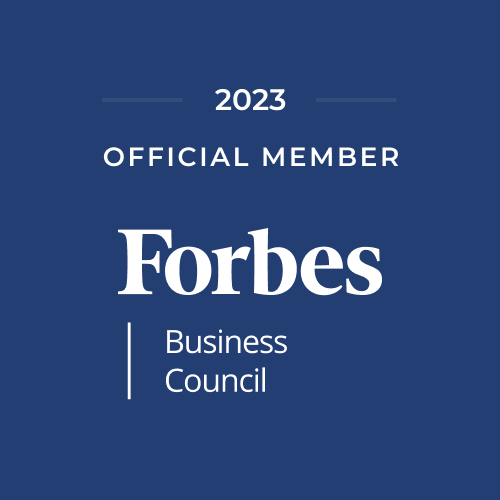Power Reads: 5 Interesting Articles That Will Help You This Week
/Each week, I select a few articles that rise above the fray and hopefully help you on your journey in leadership and the CRE world. They pull from one of four "corners": corporate real estate, technology, management science and anything positive. Each day we can become a better version of ourselves.
1. Death Reports of Retail and Office May Have Been Greatly Exaggerated
Panelists representing the industrial, office, retail and multifamily sectors of commercial real estate made the case for investment in their respective sectors at NAIOP’s CRE.CONVERGE, the virtual conference taking place this week.
In a real-time audience poll, the attendees cited industrial as the sector they would be most likely to invest in. However, much of the discussion pointed to the upsides in what, so far in 2020, has been mostly seen as a negative story for the other sectors.
Wade Achenbach, executive vice president, Portfolio Management at Kite Realty Group, said that retail may be the sector everyone loves to hate, but all that means is that it’s at the bottom of a cycle that is going to rebound.
2. Microsoft CEO Says Remote Work Can Feel Like ‘Sleeping at Work’
Samyukta Lakshmi/Bloomberg
Microsoft Corp. has been a major beneficiary of the work-from-home boom spurred by the Covid-19 pandemic. But Chief Executive Officer Satya Nadella is realizing the pitfalls of being away from the office for so long.
Online meetings can make employees tired and make it difficult to transition from a work mindset to private life, the executive said at The Wall Street Journal CEO Council on Tuesday. "When you are working from home, it sometimes feels like you are sleeping at work,” he added.
Video meetings can be particularly enervating, the CEO noted, citing brain studies on the subject. "Thirty minutes into your first video meeting in the morning, because of the concentration one needs to have in video, you are fatigued."
3. Not All Virtual Tours Are Created Equal
For commercial real estate brokers, working from home means spending hours touring space virtually. The once-nascent technology has exploded in popularity as brokers struggle to view listings for the few deals getting done during a global pandemic. What they’ve found is that not all virtual tours are created equal. The term ‘virtual tour’ has become a catch-all, understanding the difference can help owners, brokers, and tenant reps alike.
Before COVID, virtual tours were a ‘nice-to-have,’ something that showed a commitment to technology more than the space itself. Large landlords began to use the technology to attract corporate relocations, unable to easily schedule tours. In residential real estate, virtual tours quickly became the norm. For commercial real estate, adopting the technology required a crisis. Now, virtual tours have quickly become ubiquitous in the commercial real estate space as well.
The pandemic has been a game changer for companies offering virtual touring technology. Prior to 2020, Zillow, Redfin, and Matterport were navigating choppy waters. At the start of the pandemic, Redfin and Matterport were laying off employees. Meanwhile, other virtual tour providers have been hiring just to keep pace with growing demand. “Our sales are up 15 times year-over-year, we’re working hard to take it all on,” Bryan Colin, CEO of virtual tour technology VirtualAPT said. ”We’re growing our team as fast as possible.” See VirtualAPT’s demo video here.
4. The Next Generation of Office Communication Tech
HBR Staff/Yaroslav Danylchenko/Cactus Creative Studio/Stocksy
Most knowledge workers in 2020 are familiar with mixed reality tools like Zoom, Teams, and Slack that enable them to meet in virtual locations. By merging real and virtual worlds to produce new environments, employees who relied on in-person office interactions as recently as nine months ago now meet on virtual tropical islands, virtually “stand” in front of presentations beamed around the world, or maintain banter and team spirit with timely GIFs and emojis mixed into their workday messages.
But these experiences are just the tip of the iceberg of mixed reality offerings. Augmented reality technologies have become regular features in product offerings, along assembly lines, and even in surgeries. Now, with 42 percent of American full-time employees working from home for the foreseeable future as the pandemic lingers, new forms of mixed reality technologies are creating mainstream virtual substitutes for offices, and redefining the future of work in the process.
These new mixed reality applications can help companies cut costs and boost revenues. Many companies we work with are using them to shrink their real-world office footprints by about a third on average and energize far-flung employees, many of whom are already more productive while working from home with no commute.
5. Enough of Zoom—Office Happy Hours Return
Getty Images
They made do for a while with Zoom happy hours. But as coronavirus cases eased, office workers at KDG, a professional technology services company in Allentown, Pa., were eager to get together for drinks in person.
Meeting on the building’s outdoor deck, about 35 employees, all still working from home, brought their own booze. Food was individually packaged. Those attending had to stay six feet apart, and bathroom doors were labeled as entrances and exits.
“Once we decided to do it, we were very clear that if you’re going to come to the happy hour, here are the rules. They’re not breakable rules,” says the company’s chief executive Kyle H. David.
Your success blesses others. I wish you a great a hugely impactful week!






